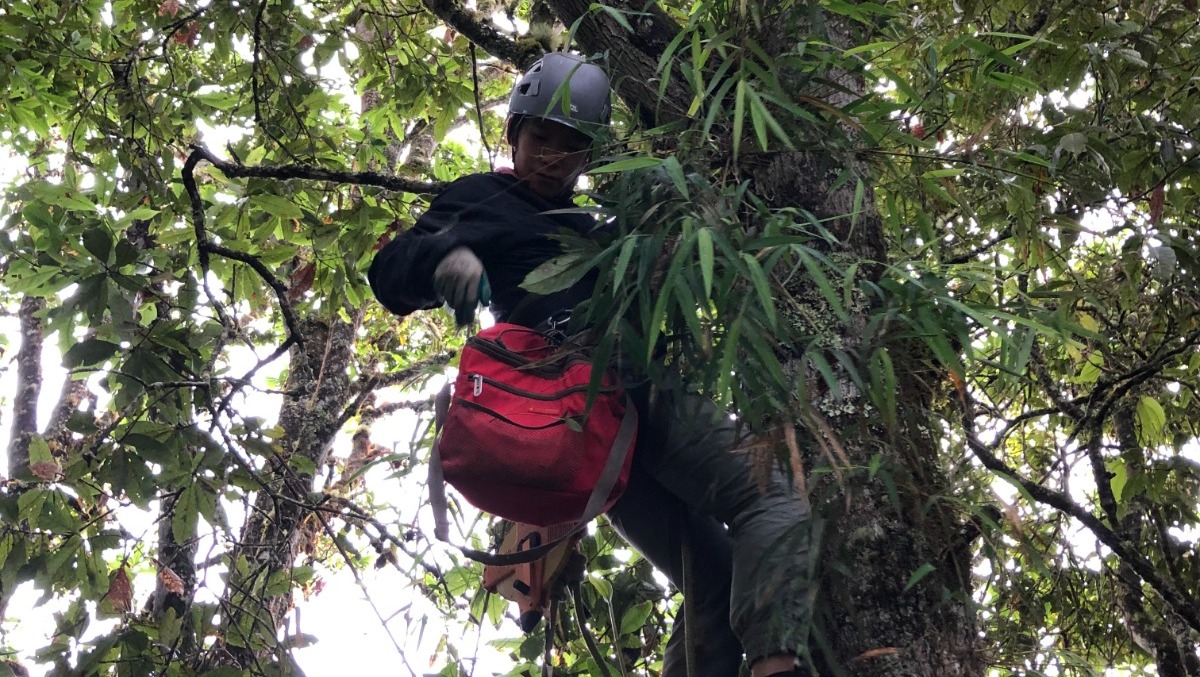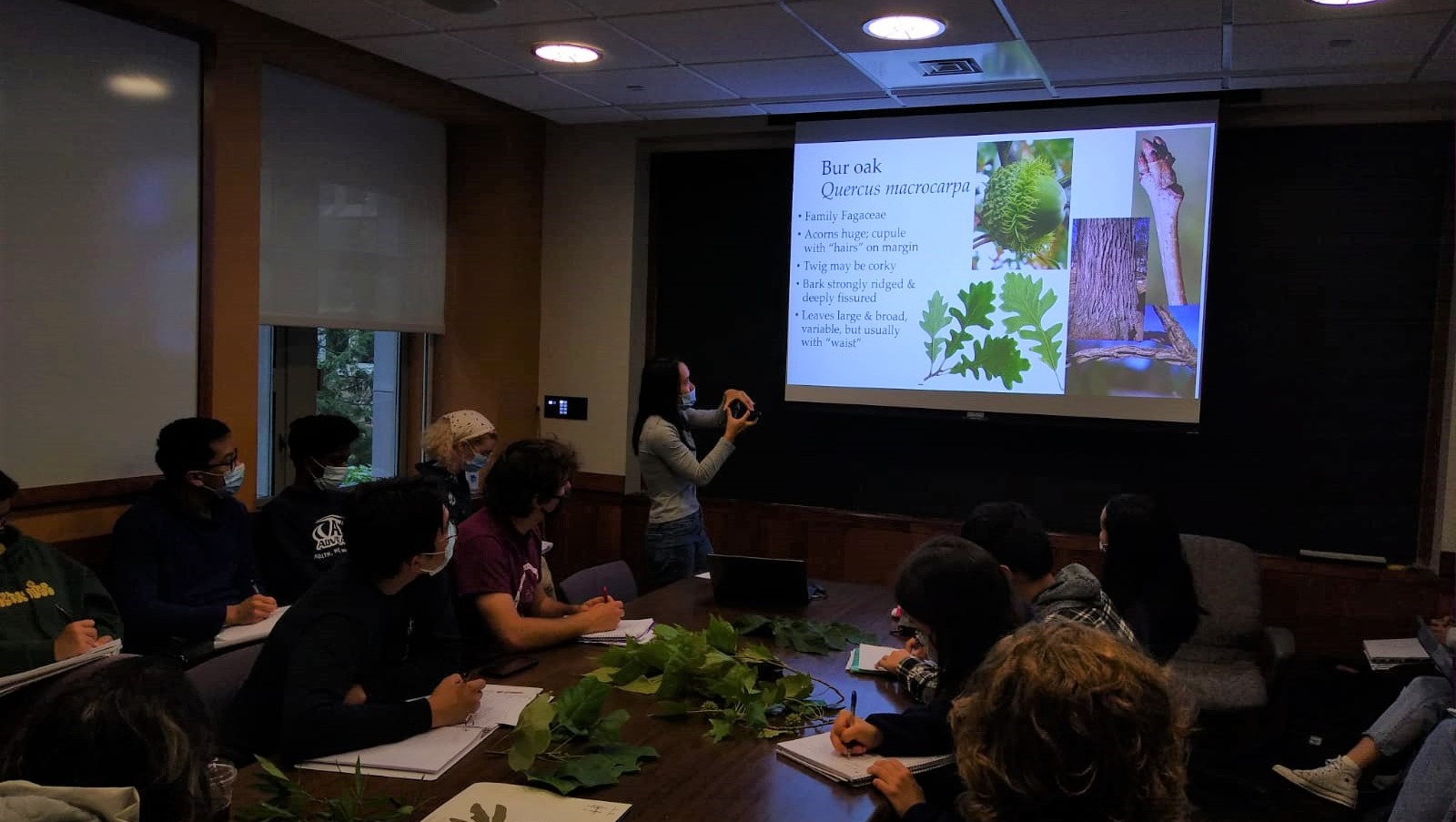
Save Our Trees: California Fires and Oaks
Donation protected
3min Youtube video: https://youtu.be/fM7RHHputy8
1. Who am I?
My name is Amanda Wu. I'm a PhD student at the University of Missouri-St. Louis, and Whitney R. Harris World Ecology Center. I study trees, canopy ecology, and species conservation. I have climbed many trees to access samples from the canopy. I also have experience analyzing genetic samples of microbial communities, and doing experiments in the greenhouse on plant-soil interactions. For this project, I will utilize these skills to understand how fires affect the soil microbes, foliar microbes, and seed microbes associated with oak trees. My research will directly contribute to the post-fire forest recovery and seedling regeneration in California.
To learn more about my qualifications, you are welcome to visit my website (https://awu-blog.weebly.com/). If you have any questions, please do not hesitate to contact me.
How to share this?
You are welcome to share this project on social media! Here are my suggested hashtags:
#womeninSTEM #womenintrees #FireEcology #climbingscientist #climatechanegscience #burningwomenCA #fireupresearchCA #CAfire
Contact Info:
Email: [email redacted]l.edu
Website: https://awu-blog.weebly.com/
Twitter: https://twitter.com/AmandaYTWu
FB: https://www.facebook.com/AmandaYTWu
Instagram: https://www.instagram.com/amanda_yt_wu/
2. Why am I doing this?
Do you remember the gloomy orange sky and the suffocating smoke from the burning forests in 2021? Have you hiked on trails through barren and charcoaled forests after wildfires? Have you wondered how long it would take for trees and forests to recover from the raging wildfires? How do tree seedlings recover from the wildfires? How might prescribed benefit seedling regeneration?
1. Who am I?
My name is Amanda Wu. I'm a PhD student at the University of Missouri-St. Louis, and Whitney R. Harris World Ecology Center. I study trees, canopy ecology, and species conservation. I have climbed many trees to access samples from the canopy. I also have experience analyzing genetic samples of microbial communities, and doing experiments in the greenhouse on plant-soil interactions. For this project, I will utilize these skills to understand how fires affect the soil microbes, foliar microbes, and seed microbes associated with oak trees. My research will directly contribute to the post-fire forest recovery and seedling regeneration in California.
To learn more about my qualifications, you are welcome to visit my website (https://awu-blog.weebly.com/). If you have any questions, please do not hesitate to contact me.
How to share this?
You are welcome to share this project on social media! Here are my suggested hashtags:
#womeninSTEM #womenintrees #FireEcology #climbingscientist #climatechanegscience #burningwomenCA #fireupresearchCA #CAfire
Contact Info:
Email: [email redacted]l.edu
Website: https://awu-blog.weebly.com/
Twitter: https://twitter.com/AmandaYTWu
FB: https://www.facebook.com/AmandaYTWu
Instagram: https://www.instagram.com/amanda_yt_wu/
2. Why am I doing this?
Do you remember the gloomy orange sky and the suffocating smoke from the burning forests in 2021? Have you hiked on trails through barren and charcoaled forests after wildfires? Have you wondered how long it would take for trees and forests to recover from the raging wildfires? How do tree seedlings recover from the wildfires? How might prescribed benefit seedling regeneration?
I want to address these questions using my established skills – tree climbing (to collect canopy leaves and seeds), microbial analyses (to collect and analyze microbiomes), and genetic analyses (to study microbial DNA). I need support from like-minded people like you to “fire” up this research project. Together, we can contribute to the knowledge and wisdom on fire and forest management.

If funded, I plan to broadcast the research findings and their significance through different activities of science outreach, including webinars, public talks, and outdoor classes for students.

I choose to focus on oaks because California oaks are culturally, ecologically, and economically important for the California landscape. However, the implications of this research will be generalized to other important trees and woodlands in California and the west coast in general, including forests dominated by Sequoia, pines, and firs.
Sponsorship is welcome.
3. What is this project for?
The objectives of this project are: 1) to understand fire-induced changes in microbial communities, 2) to inform the conservation of Californian oaks under the stress of more frequent wildfires in the future, and 3) to broaden the impacts of this research by science outreach.
More details:
Trees rely on mutualistic fungi to defend themselves from pathogens and abiotic stresses. For example, ectomycorrhizal fungi, a diverse group of fungi commonly associated with tree roots, can stimulate tree roots to produce chemicals that suppress infections. As another example, leaf-interior fungi in oaks reduce leaf-miner parasitism. Although Californian oaks have evolved with fires in the past millennia and show a certain degree of fire resiliency, the recent increase in wildfires has modified the soil and foliar fungal composition, which can then decrease the abundance and richness of beneficial fungi at the seedling stage. Wildfires can also physically damage trees and decrease host immunity, making it easier for opportunistic pathogens to invade. In contrast, it has been shown that prescribed burning can reduce insect pests. I suspect that similar effects might be observed for suppressing fungal pathogens as well. It remains largely unknown how wildfires vs. prescribed burning affect the composition and functional roles of soil microbes, foliar microbes, and seed microbes in oaks; and in turn, how do the changes in microbial communities affect seedling regeneration after fires.
Research procedures
To address these issues, I will sample ten California Black Oak (Quercus kelloggii) trees in the Central Valley: four trees that have not been burned due to long-term fire suppression, three trees that were recently burned by wildfires in 2021; and three trees that received prescribed burning in 2021. To examine foliar microbiome, I will collect five leaf samples from high- and mid-canopy leaves that were not scorched, and from new stump sprouts for each tree (see figure below). Leaves from the same canopy zone from the same tree will be then combined to one sample. To examine soil microbiomes, I will collect five soil cores (5 cm diameter, 15 cm deep) under the canopy. Soil cores from the same tree will be combined into one sample. In the fall, we will revisit the trees to collect two types of acorns: five acorns on the trees, and five acorns on the ground. In total, I will collect 30 foliar-microbiome samples, 10 soil-microbiome samples, 20 acorn-microbiome samples. Upon collection, samples will be stored in a -20 °C freezer or in dry ice during transportation until arrival to the Fukami Lab, Stanford University. I will extract DNA, send the samples for amplicon sequencing, and then perform genetic analyses to examine the differences in microbes between the three categories of trees.
Budget breakdown:
• Transportation (mostly gas): $600. This includes a round trip drive between St. Louis Missouri (where I’m based at right now) to California, and driving within California.
• Accommodation in California: $1,500 ($50/day x 30 days).
• Shipping DNA samples: $300.
• DNA sequencing: $3,120. For a minimum of 60 samples, I will need $3,120 ($52 x 60).
What about other funding?
I have already applied for one local grant from the California Native Plant Society—Alta Peak Chapter ($500). I will be applying for other grants or scholarships, including but not limited to the California Botanical Society Paul Silva Student Research Grant (deadline May 15, 2022; $600), and the Stanford Center for Computational, Evolutionary and Human Genomics Scholarship (deadline in May, 2023; $15,000). Since I am not certain that I can secure funding from these sources, I set up this GOFUNDME project. I hope that with the help from people like you who care about the future of our environment, I can start collecting data this summer of 2022. With the data of this pilot study, I will eventually apply for competitive postdoctoral fellowships to acquire more data for in-depth analyses.
Project timeline
May 2022: apply for research permits;
June-July: order necessary field equipment;
Early August: collect leaf and soil samples in the field;
Mid August: extract fungal DNA from leaves and soils, and check DNA quality;
October: revisit the trees to collect acorn samples;
November: extract fungal DNA from acorns, and send all DNA samples for DNA sequencing;
January—March 2023: analyze sequencing data, produce and summarize results for reports and articles mentioned above.
 Organizer
Organizer
Yingtong Wu
Organizer
St Louis, MO